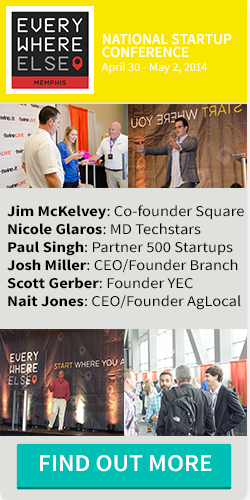Indie retail (think Etsy and Shopify) is becoming a big deal these days. With these revolutionary platforms, every day entrepreneurs and makers can sell products direct to consumers. By cutting out big retailers, these individuals and small companies have higher profit margins and better chance at success.
But, they still lack one thing.
Marketing.
 Lumiary, founded by several tech veterans including Etsy’s former head of analytics, solves that problem for them. Their system creates a marketing dashboard that can compete with big companies.
Lumiary, founded by several tech veterans including Etsy’s former head of analytics, solves that problem for them. Their system creates a marketing dashboard that can compete with big companies.
Check out our Q&A with Lumiary below:
1) What’s your startup called?
Lumiary
2) What’s your big idea?
Independent retail has lost half its market share over the past 30 years. At Lumiary, we believe independent makers and brands are now producing some of the best products out there. And because of the internet, they can reach just as many shoppers as large retailers. When it comes to marketing themselves, however, they are wildly outgunned when it comes to budget, data, and expertise. So even with a superior product, independent retailers are being left behind.
Our mission is to help makers and independent brands compete with big brands by leveraging their more personal relationships with their customers, fans, and followers. Lumiary is an integrated marketing platform for indie ecommerce brands that works just like the big data dashboards that all the big guys have, but is tailored for their unique strengths. Currently, the only analytics, marketing, CRM options for these small businesses are point solutions, forcing busy entrepreneurs to pull data from multiple platforms on their own and then attempt to make sense of it.
3) What’s the story behind your idea?
Each of the Lumiary founders approaches indie brand marketing from a different perspective. Carrington comes from Etsy, Charles consulted for American made indie brands, and Matt built multichannel merchandising technology for small retailers. We came together when we collectively realized the widening gap in product quality, originality and authenticity between the big brands and independent ones. We felt more shoppers should be buying products from independent retailers, and our mission is help them take back market share.
4) Who are the founders?
Carrington Williams, formerly head of analytics and business development at Etsy, and Product Manager at AOL
Matthew Knight, formerly from Reconstrukt, EMC and Computer Associates
Charles Valentine, formerly a vice president at Discovery Communications and advisor to Northern Grade and Pierrepont Hicks
5) Where are you located?
Richmond, Va.
6) What’s the startup scene like there?
The startup scene in Richmond is quickly growing and changing. New incubators have popped up in the past 2-3 years, we are a part of one called 80amps, backed by the nationally recognized Martin Agency. And there is a huge creative/maker culture coming out of VCU Design and Brand schools.
7) What milestones have you reached?
We have just now come out of our beta, and now have our first paying customers. We’ve also gone through the painstaking work of establishing critical integrations with the leading ecommerce platforms, social networks and analytics tools, including Shopify, Big Commerce, Magento, Facebook, Twitter, Tumblr, Instagram and Google Analytics.
8) What are your next milestones?
Up next we’re going integrate with Etsy stores, so we can offer our easy to use marketing platform to the millions of amazing stores on Etsy. We’re also launching soon our customer micro-segmenting tool to allow brands be more personal in customer communications and thus increase sales from email campaigns.
9) Where can people find out more?






